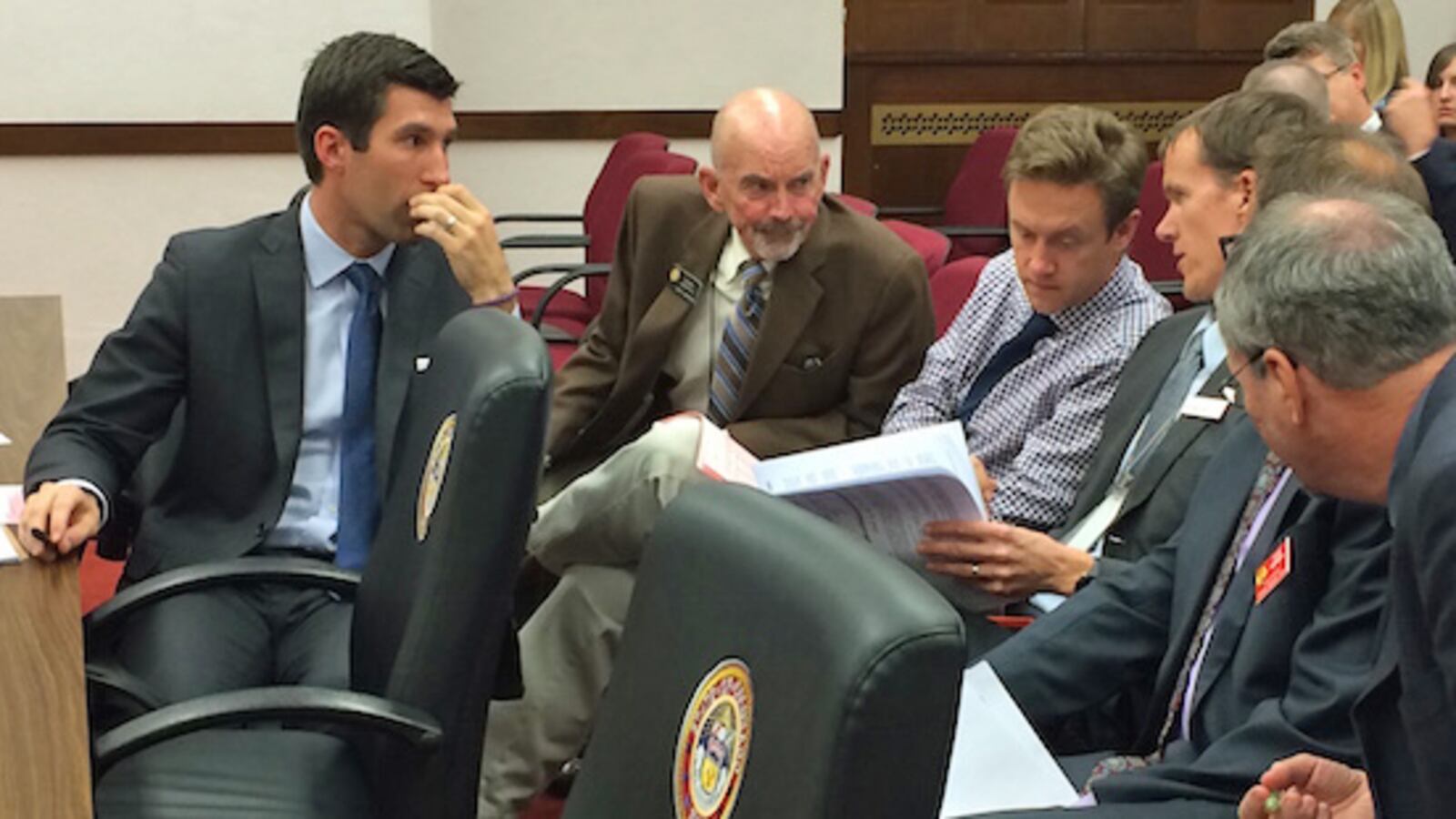The most modest school-funding bill in recent memory was passed 9-0 Thursday by the Senate Education Committee after some prolonged member handwringing about Colorado’s K-12 finance woes.
Sponsor Sen. Owen Hill, R-Colorado Springs, acknowledged that Senate Bill 15-267 is a “very small bill.”
While the measure would increase K-12 funding by $306 million to about $6.23 billion next school year, most of that is driven by constitutionally required hikes to cover enrollment growth and inflation.
The only discretionary increase in the bill is $25 million that would be applied to the state’s K-12 funding shortfall, the so-called negative factor. That figure currently is about $880 million, and in the past it’s been as high at $1 billion.
Average per-pupil funding would rise to $7,295 from this year’s $7,026. (Get more details on the bill in this staff summary.)
Only a couple of witnesses testified. Adams 50 Superintendent Pam Swanson urged that the new money be targeted to at-risk students.
She was followed by Jane Urschel, veteran lobbyist for the Colorado Association of School Boards.
Urschel is known around the Capitol for this description of K-12 funding: “School finance is like a Russian novel – long, boring, bloody and in the end everyone dies.”
Thursday, Urschel said to Hill, “Senator, you’ve written a children’s book. It’s short and it ends sadly.”
Saying, “I hope to add a slightly happy ending to this short story,” Sen. Mike Johnston, D-Denver, proposed a couple of amendments to the bill, but they were mostly for show.
The first would have taken $200 million from the State Education Fund (a dedicated K-12 account) and added it to the bill, divided among the negative factor, small rural schools and at-risk students. (Johnston’s amendment was in the spirit of a plan that’s been pushed by 174 of the state’s 178 superintendents.)
That amendment predictably failed, as did a second Johnston motion to split the $25 million between rural aid and at-risk students.
“I appreciate what you’re trying to do here,” Hill said, to which Johnston replied “the kiss of death.” (Hill uses the “I appreciate” phrase almost every time he starts speaking against a bill or motion.)
Hill started the session with high hopes and big talk about reducing the negative factor, providing more money for charter schools and deciding on the school finance bill much earlier in the legislative session.
“The money available for our K-12 schools unfortunately has been squeezed out by what are seen are higher priorities. I’d like to change that,” he said.
Hopes for bigger increases in school funding have run afoul of the state’s paradoxical financial situation. A healthy economy is driving higher state tax collections and other revenues, but that income has pushed the state above the annual spending limit imposed by the Taxpayer’s Bill of Rights. That triggers refunds to taxpayers, meaning the much of the new revenue can’t be spent for education or other state programs.
Capitol budget experts consider heavy use of the State Education Fund, as proposed by Johnston, unwise because money spent from that fund one year becomes an obligation of the state general fund in future years. Because state constitutional provisions set a ceiling on overall state spending in a given year, automatic increases in education funding reduce the amount of money available for other programs.
See the link on this page for a spreadsheet listing how SB 15-267 would affect individual school districts.


